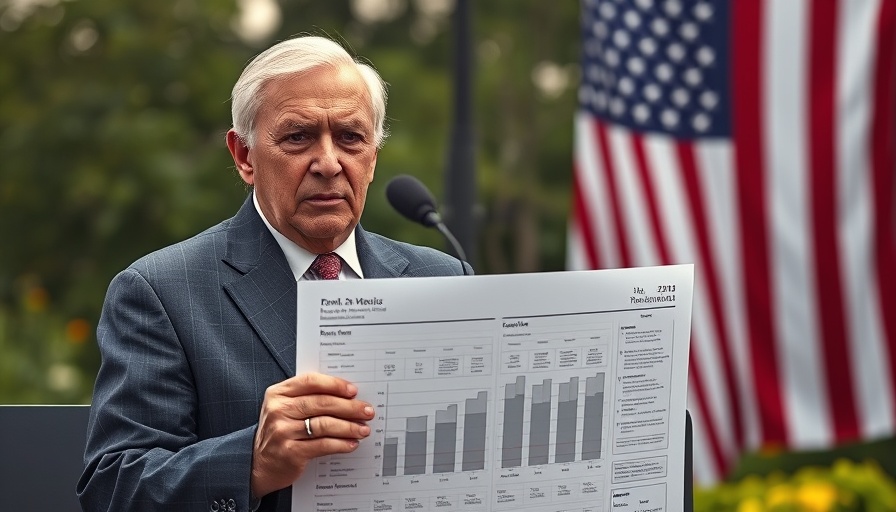
Understanding Trump's Latest Tariff Announcement
In a bold move reminiscent of the trade policies he championed during his presidency, former President Donald Trump has unveiled a sweeping tariff plan that imposes duties of at least 10 percent on imported goods from nearly all American trading partners. This initiative, set to commence on April 9, 2025, aims to bolster the U.S. manufacturing sector and potentially lower consumer prices amidst rising inflation.
Who Will Be Impacted by These Tariffs?
Trump's announcement comes with a pointed focus on what he categorizes as “worst offenders” in trade practices. This includes countries like Vietnam, China, Taiwan, Japan, and members of the European Union, which face significantly high tariffs of up to 49 percent based on the U.S. tariffs imposed on them. Observers, however, caution that this could be a strategic negotiating leverage rather than a definitive economic plan.
The Bigger Picture: Will This Revive U.S. Manufacturing?
Trump's central argument is that his administration's tariff regime will stimulate domestic manufacturing and encourage Americans to buy locally produced goods. However, economists warn of the potential risks that come with such policies. Higher tariffs could lead to augmented prices for everyday consumers and contribute to inflationary pressures. Repercussions could ripple through the economy, threatening to spark a trade war and disrupt critical supply chains.
How Investors Reacted to Tariff News
The market's initial reaction to Trump's announcement was cautious. Following the address, S&P 500 futures fell by 2 percent, indicating a level of apprehension among investors. Key players in the real estate sector—including companies like Zillow, Redfin, and Compass—saw declines in after-hours trading, reflecting concerns about how increased tariffs could impact the broader economy. This reaction underscores the necessity for businesses and investors to strategize in light of these tariffs as they could alter consumer spending behaviors significantly.
The Controversy Surrounding Tariff Data
Citing a chart he presented, Trump claimed that foreign tariffs on U.S. goods necessitated a reciprocal response. However, some experts, such as journalist James Surowiecki, criticized this approach as misleading. They argue that the perceived tariff rates could misrepresent the economic dynamics at play, complicating the debate over international trade policies.
Future Insights: What Lies Ahead?
As the impending tariffs loom, experts are keenly observing both the domestic and international reactions. Some predict that if escalated, this could ignite a new trade war, while others suggest that there might be negotiation opportunities ahead. The key takeaway for consumers, investors, and businesses alike is to brace for two potential outcomes: increased prices in the short term and the long-term consequences of strained relationships with trading partners.
Conclusion: Preparing for Changes in the Trade Landscape
Trump's announcement emphasizes the ongoing volatility of trade relationships and the complex nature of global commerce. Whether his tariff plans will successfully revive U.S. manufacturing or lead to economic unrest remains to be seen. As stakeholders navigate these uncertain waters, staying informed about these developments and their implications will be paramount.
 Add Row
Add Row  Add
Add 




 Add Row
Add Row  Add
Add 

Write A Comment